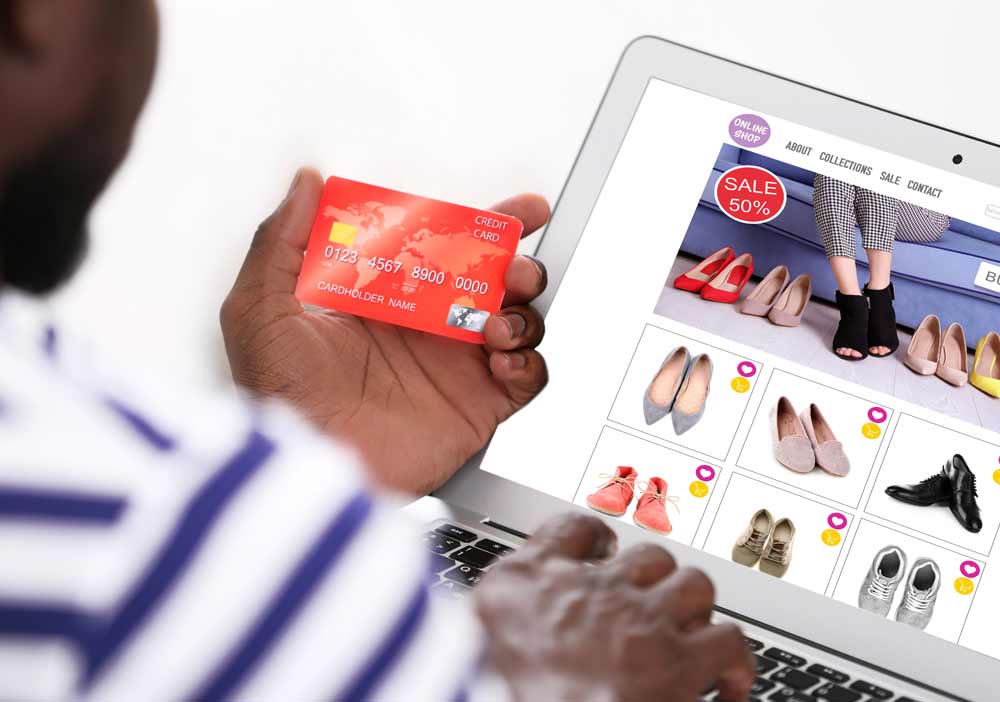A Free Business Plan Example to Launch Your South African Business This free Business Plan example provides you with a sample business plan as well as guidance on how to write a business plan and important sections to include in your plan.
You're reading Entrepreneur South Africa, an international franchise of Entrepreneur Media.

It pays to plan.
Research conducted by Harvard Business Review found that "entrepreneurs who write formal plans are 16% more likely to achieve viability than the otherwise identical non-planning entrepreneurs."
Simply put, writing a business plan could make the difference between business success and failure – which is why planning now could pay dividends as your business gets off the ground.
But where do you start when writing a business plan? In this comprehensive business plan example, we provide you with what to include in your business plan and a sample business plan to help you to create a compelling plan for your start-up.
1. Executive Summary
If you have seven seconds to make a strong first impression in person, an Executive Summary will be the make-or-break section of your business plan – so make this section count.
As a brief outline of your company's purpose and goals, the Executive Summary should generally take up 1 to 2 pages of your business plan. Some key components to include in your business plan are:
- A company description
- A brief summary of your products or services
- The company objectives
- A short but thorough overview of the market
- A justification for viability, particularly "why now?"
- A snapshot of your business's growth potential
- A short description of the organisation team
- Your marketing plan
- Financial projections
Importantly, your Executive Summary must clearly depict the Problem, the Solution, and carry a sense of timeliness – why now should your business be considered as the solution to solve this problem.
NOTE: The following Business Plan Example is based on a fictional company. Figures will not reflect the exact financials of a similar company.
Example of a Business Plan Executive Summary

Snug Sneakers is a sneaker shoe range based in Cape Town that currently focuses exclusively on selling locally produced men's and women's custom sneakers.
The business was founded by David Smith and Stewart Bruce, who have both been working within the retail industry for over 20 years, David Smith, a serial entrepreneur has also founded successful brands – Creative Caps and women's cycling brand Pedal Power.
The brand is currently selling online, however has also recently diversified to selling in independent shoe shops.
The company is projecting to sell R2 million in year 1 and R8 million in three years' time. Additionally, there are expansion plans within year 2 to set up distribution networks in Johannesburg, and Durban in the early part of year 3.
Both David and Stewart are social entrepreneurs at heart and believe in providing sustainable jobs for impoverished communities.
As such, the company has started a recycling and training academy in Khayelitsha, where consumers can return old sneakers that are then repaired by Khayelitsha residents and donated to those in need of shoes. This also provides learners within the academy with shoe-making and recycling trade skills.
Industry research has shown that, on average SA consumers own 4 pairs of sneakers, with 4 in 4 consumers indicating that shoe fit and sizes vary across brands.
3 in 4 consumers indicated that their number one concern when purchasing is having to "settle' for the best fitting shoe, despite the fit not being 100% correct.
Based on these and additional industry research statistics, the company's sneaker products are driven to provide the best shoe fit, with the tagline of "shoes that fit so good, you'll never go barefoot again.'
The main competition to Snug Sneakers comes from 1 local brand, SuperStars, and 2 overseas brands Sassy Sneakers and Rock Your Sneakers.
Although SuperStars supports sustainable use of local manufacturers, the competitor does not provide custom fit sneakers. Sassy Sneakers and Rock Your Sneakers both offer custom fit sneakers, both brands are manufactured in China and do not promote sustainable, social conscious value propositions.
The primary means of marketing will mainly be focused on digital marketing, through evidence-based approaches, including search engine optimisation, Google Ads, Facebook Advertising as well as utilising social media channels that have proven very popular for the company, including Instagram, Pinterest and Facebook.
The locally sourced raw materials, which include cotton, rubber and leather, will be supplied from a sustainable cotton mill and tannery in the Limpopo Province.
Funding for the company was derived through the 2 founders, as well as private investment.
2. Business Overview and Objectives

Creating an overview of your business when you are already established makes it easier, but it may be a little harder when you're either just starting out or haven't even kicked off your operations yet.
When you're just starting out, think about your products and services as your starting point.
- What will you be providing your market with?
- How will you be sourcing/ producing these items?
- What do you need to have in place before you can start selling your products?
- Who will be distributing/ manufacturing your products?
- Importantly, who will your target market or customer be?
In our example business plan, Snug Sneakers serves both retail and online customers, although the bulk of the business is through their online clientele.
This means that Snug Sneakers will need a secure e-commerce platform and a website that has carefully considered the user journey when buying custom sneakers.
The company will also need employees to assist with technical challenges, customer support, and warehouse staff for the packing and distribution of their products.
Similarly, you would need to consider the following when identifying their business objectives:
- What industry will you operate in?
- Who will be your customer?
- What is the problem that you will be solving?
- How will you solve this problem?
- Where will my business be located?
- What equipment and resources will I need within my business?
- What type of employees do I need?
- How will I differentiate my offering from my competitors?
After answering these questions, you will have a better understanding of what it is that you will be offering and what you need to make it happen. A summary of these points will make up your Business Overview and Objectives for your Business Plan.
Example of a Business Overview and Objectives
Snug Sneakers, based in Cape Town South Africa, is focused on providing sustainable, locally produced custom footwear to South Africa, and internationally through its e-commerce platform and local distributor network.
Founded by entrepreneurs David Smith and Stewart Bruce in December 2017, from Stewart's garage, Snug Sneakers grew exponentially within 1 year from 5 online purchases a month to an average of 200 per month within 12 months.
From the company's rapid growth, it became very clear to the founders that there is a gap in the South African market for locally produced, quality sneakers.
The founders' vision for Snug Sneakers is to become a socially conscious, sustainable brand that supports the South African economy by buying 80% locally produced raw materials.
Additionally, the duo noticed a gap in the market where consumers were looking for custom-fitted shoes and remain loyal to the brand that fit them best. To this end, Snug Sneakers offers a wide range of shoe sizes including quarter and half sizes to ensure that all customers find the right snug fit for their feet.
The overarching philosophy and ethos for the company are:
- "Soul sneakers' that allow customers to purchase sneakers that promote social consciousness.
- "South African sourced' sourcing locally produced raw materials that provide job sustainability.
- Superior sneakers' ensuring that customers still get a high-quality product that outmatches popular brands in workmanship and quality.
Company Status
Snug Sneakers was registered as a PTY (Ltd) on 1 December 2017. The main directors are David Peter Smith and Stewart Owen Bruce. Company shares are held by the founders.
The company currently operates out of rented commercial property in Blackheath, Cape Town.
Company Objectives
Snug Sneakers is currently selling custom sneakers primarily through its online store https://www.snugsneakers.co.za, with market penetration nationally, and highest market penetration in Johannesburg and Cape Town. Sporadic orders have also been received from the USA and the United Kingdom.
The company has also partnered with 3 independent shoe and clothing retailers focused on selling locally-sourced South African apparel.
The company has identified a 2 phased upscaling approach for growing sales and operations:
Phase 1:
- Increase online sales by 40% within a 6-month period of 2019
- Increase brick-and-mortar retail partnerships from 2 stores in Cape Town to an additional 4 stores in Johannesburg by year end.
Phase 2:
- Increase online sales by 50% by end of year 2020
- Explore opening up a brick-and-mortar store in the Canal Walk Shopping Centre, Cape Town
- Increase brick-and-mortar retail partnerships to include 1 store in Durban.
3. Products and Services

In this section, you will be unpacking your product and services offering, especially your key product differentiation from your competitors. Importantly, in this section you will also need to validate why your product is needed by your customers.
If you have applied for any patents, copyrights, or trademarks, you would also include these in this section.
Products and services that already exist may not need a deep analysis of what they are within your business plan.
However, if you're creating a completely new product or service (if you were the first Uber of the world), carefully detail in this section what your product is about, it's uses and the value it brings to the market so your readers will be able to evaluate the value of your product and services.
Some important aspects to cover include:
- The anticipated timeline to bring your new product to the market.
- What differentiates your product or service from those already available in the market.
- What will your operating costs be and profit margins.
- How will you source/ manufacture your product.
- How will the product be distributed to customers.
Example of Products and Services
Snug Sneakers will provide a line of custom sneakers for both men and women. The main product lines include:
- Casual Range: Everyday sneaker footwear
- Active Range: Active gym range of sneakers
- Fashion Forward Range: Formal but funky range of sneakers
Current pricing of the sneakers as follows:
- Casual Range: R550
- Active Range: R950
- Fashion Forward Range: R850
Competition
There are three main competitors that have been identified within the market. These include:
Local competitor:
1. SuperStars 40% locally made raw materials, with 60% of the raw materials originating from China. The brand however does not provide custom-fit sneakers.
Foreign competitors:
2. Sassy Sneakers are based in Australia, with the product line produced in China. The company offers custom fit sizes, however customers have to pay extra for the custom fit and product quality is low.
3. Rock Your Sneakers is a US based company, with the product line produced in China. The company offers some custom fit sizes, however the sizes are limited and the product is only available to South African's online and with a long lead time to delivery.
Snug Sneakers products have a unique differentiator within the market:
- A greater range of custom fit sizes ranging from ¼ - to half sizes as well as broad and narrow width ranges.
- The company will be the only brand within South Africa to offer 80% locally manufactured sneakers.
- Quality of the products is superior to the current locally-made competitor, due to locally sourced high-quality raw materials.
Future Products
The company has also been looking into introducing a line of sneaker care products to assist customers in increasing the longevity of their purchases.
4. Competitive and Market Analysis

Providing evidence that there is demand for your product or service is one of the most critical components of your business plan. Key to this is understanding your market and your competition within that market.
Embarking on market research requires you to have a deep understanding of what your market is and the opportunities inherent within it. You should be able to define:
- Target Market. The types of customers you will be targeting with your product or service.
- Market Need. If there is demand for your products and services and whether this is increasing or declining.
- Competition. The positioning of your competitors in the market and how you will differentiate your offering from them.
- Barriers to Entry. What will prevent someone else from providing the same offering or better.
- Regulation. Regulations that will be applicable to the industry that your business will be operating in.
Example of a Market Analysis
Target Market
With our initial line of casual, active and fashion forward sneakers, we're looking to target the following consumer segment:
- Age: 16 -36
- Digital Savvy: Researching and shopping online is part of this customer's DNA. The target market is also very active on social media platforms such as Instagram, Pinterest and Facebook.
- On Trend: Fashion forward and looking to illustrate their unique personalities, the target market is always looking for fashion to express their uniqueness.
- Social Consciousness: The target market is proudly South African and are highly conscious of the socio-economic issues and have a keen desire to take part in improving the SA economy, uplifting communities and supporting local initiatives.
Market Need
According to a Global View Research Marketing Report, the global athletic and leisure footwear market size was valued at USD 67.8 billion in 2017. The report found that this value is expected to expand at a CAGR of over 8.0% from 2018 to 2025.
The ever-growing awareness with regards to the health benefits of sports and fitness activities, as well as an expanding retail e-commerce sector globally, including increasing levels of disposable income amongst millennials are estimated to be the key reasons for increasing market growth in this market.
Additionally, the Global Sneaker Market 2018 Industry Trends and Sales report found that although the global brands reported increased profit margins in 2017, these have decreased by 1.5% from 2016.
On the other hand, independent Sneaker retailers have reported a 15% increase in sales, particularly online, in 2017, indicating that consumers are moving away from global brands to pursue lesser known boutique footwear retailers.
Competition
Local competitor:
- SuperStars is based in Johannesburg and provides sneakers with 40% locally made raw materials, with 60% of the raw materials originating from China. The brand however does not provide custom-fit sneakers.
Foreign competitors:
- Sassy Sneakers are based in Australia, with the product line produced in China. The company offers custom fit sizes, however customers have to pay extra for the custom fit and product quality is low.
- Rock Your Sneakers is a US based company, with the product line produced in China. The company offers some custom fit sizes, however the sizes are limited and the product is only available to South African's online and with a long lead time to delivery. (Repeated above)
5. Marketing/Sales Strategy

You're on the right track when you have established that there's a market for your product and service and you have identified who your target market is quantifiably, but how will your market segments know to look out for or even buy your product and services?
This is where your marketing and sales strategy comes into play.
A well-defined marketing strategy goes beyond simply advertising your product and service – it includes a deeper understanding of how your customers will view your brand, what is the best way to reach your customers, the benefits that your customer will receive from using your service or buying your product.
Your marketing strategy must also include the budget for your marketing and sales efforts, whether you will require sales staff to sell your products and offer post-sales support, as well as how you will measure your marketing and sales efforts to evaluate their effectiveness.
Example of a Marketing Strategy
Marketing Plan
- Search Engine Optimisation: Our website pages will be optimised for search engine rankings, with the objective to rank within the top 3 search positions for keywords "custom sneakers", "custom size sneakers" and "custom made sneakers".
- Paid Search: Snug Sneakers will be investing in Google Ads and Facebook Advertising and well as Programmatic Advertising to increase landing page conversion rates.
- Social Media: We will be establishing a targeted social media strategy to increase followers across the social media platforms that have shown the highest engagement with the target market. High frequency posts will be created target at highest engagement times to increase engagement and brand awareness.
- Business Network: We will partner with independent apparel and footwear retailers to drive link building and link sharing both on website and on social media.
Customer Value Proposition and Value Differentiator
Although there is one locally produced sneaker competitor within the market, the founders believe that the customer value proposition being brought to the market is a unique offering and therefore a strong differentiator within the market.
The founders are cognisant that without this differentiator, the only differentiator will be price, which will ultimately have a negative impact on profit margins.
As a unique differentiator and value proposition, Snug Sneakers provides customers with Sneakers with South African Sole, leveraging the Proudly South African heritage and support for local initiatives to help grow South Africa's job economy and promote community upskilling and learnership programmes.
Additionally, Snug Sneakers will ensure that the quality of the products far outweighs those of global brands manufacturing in China. The most important differentiator, however is the ability to custom size shoes to each individual's unique size requirements.
6. Staffing and Operations

Strategy is irrelevant without execution – which is where your Operations Plan comes into play in your business plan. How will you serve your customers, while keeping your operating costs low enough to make sufficient profitability?
Your Operations Plan will detail how you will manufacture, staff, fulfil and stock your products, including your day-to-day operational requirements. Ultimately, this section describes how you will run your business.
Some questions to answer in this section include:
- Where will your operations be based?
- What is your management structure?
- What are your staffing requirements?
- What equipment, facilities and supplies will you need?
- How will you establish your suppliers?
- What will be the operational changes required should your company grow?
- What will your production methods entail?
- How will you service/ deliver goods to customers?
- What regulatory requirements must be in place? (Licences, permits etc.)
- How will you manage your inventory levels?
Example of Staffing and Operations
Management Team
David Smith is a serial entrepreneur who founded successful and well-known brands Creative Caps and women's cycling apparel Pedal Power.
David graduated from Stellenbosch University with a B Comm in Economics and went on to study an MBA at GIBS Business School. David heads up Snug Sneakers as the Chief Executive Officer (CEO).
Stewart Bruce has worked in the retail industry as a Senior Designer for well-known retail brands, including Puma and Sketchers.
With over 20 years' experience in designing active and casual footwear, as well as sourcing and overseeing materials for the product range, Stewart brings excellent experience to the management mix as Chief Design Officer.
7. Financial Projections

The bottom line counts the most when it comes to writing your business plan.
Without the numbers to prove whether your business will be profitable or not, potential investors or lenders will have a difficult time objectively deciding if your business will be a sound investment.
Aside from persuading potential investors, crucially, the numbers that you have crunched will also indicate whether you have a viable business.
There are five basic reports or cash projections to include in your business plan:
- Income Statement
- Balance Sheet
- Cash Flow Statement
- Operating Budget
- Break-Even Analysis
It's important to come up with credible financial projections for your business to illustrate that it is feasible.
One way to tackle this section is to break down the figures into various components, such as by sales channel or target market segment.
At this stage, you won't be able to supply exact figures, because you're still estimating your future financials, but by breaking down your guesses into components you will be able to determine a more realistic figure for each component, rather than hazarding guesses as a whole.
Remember
The business plan should be an ongoing, living document that can be used as your guide for running your business. It requires continuous adjustment as your business changes and grows.










